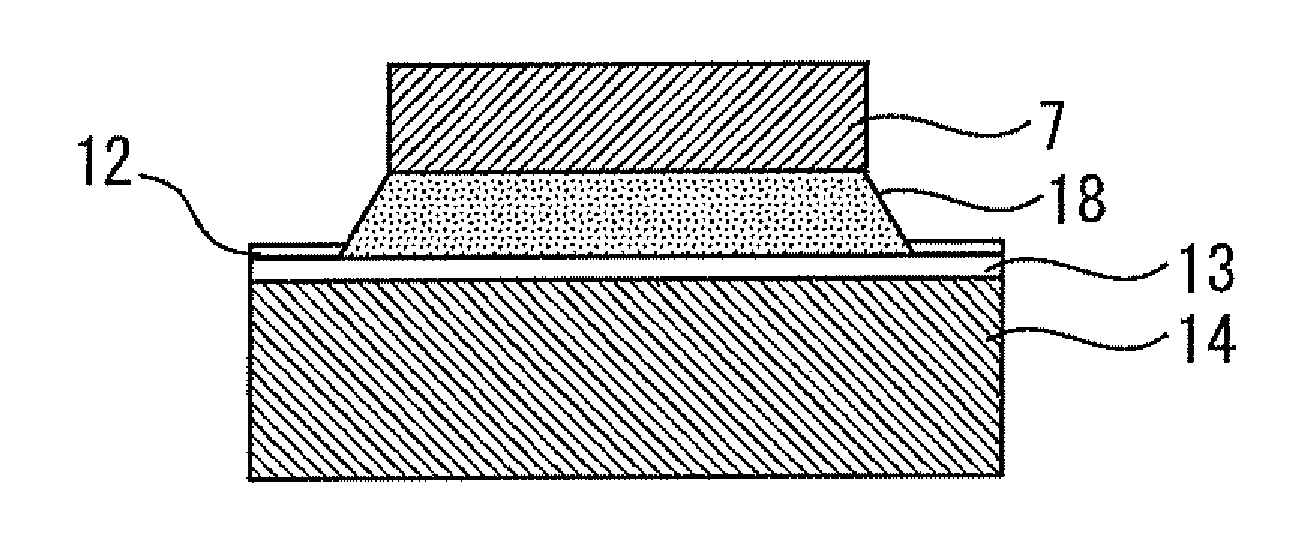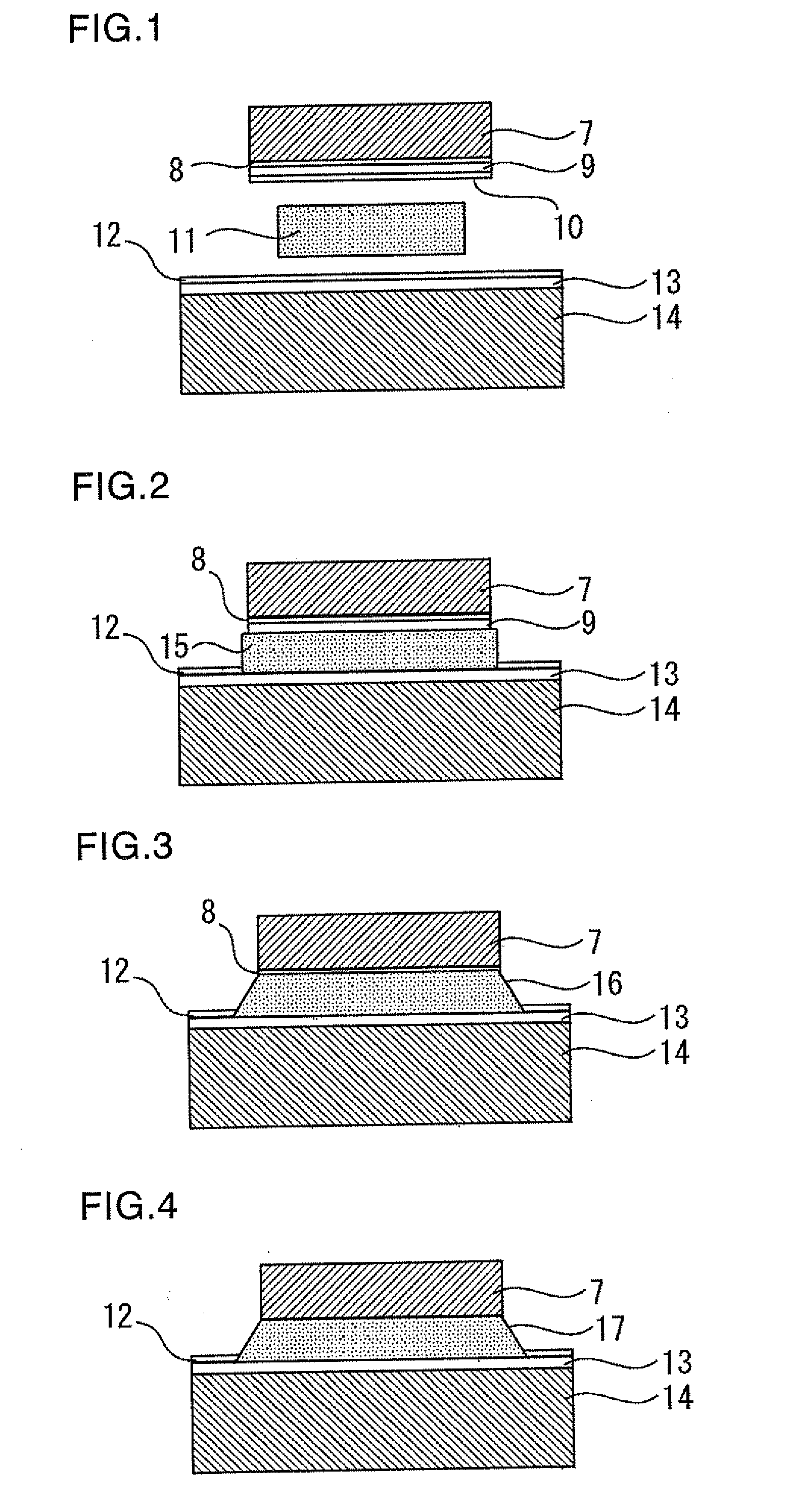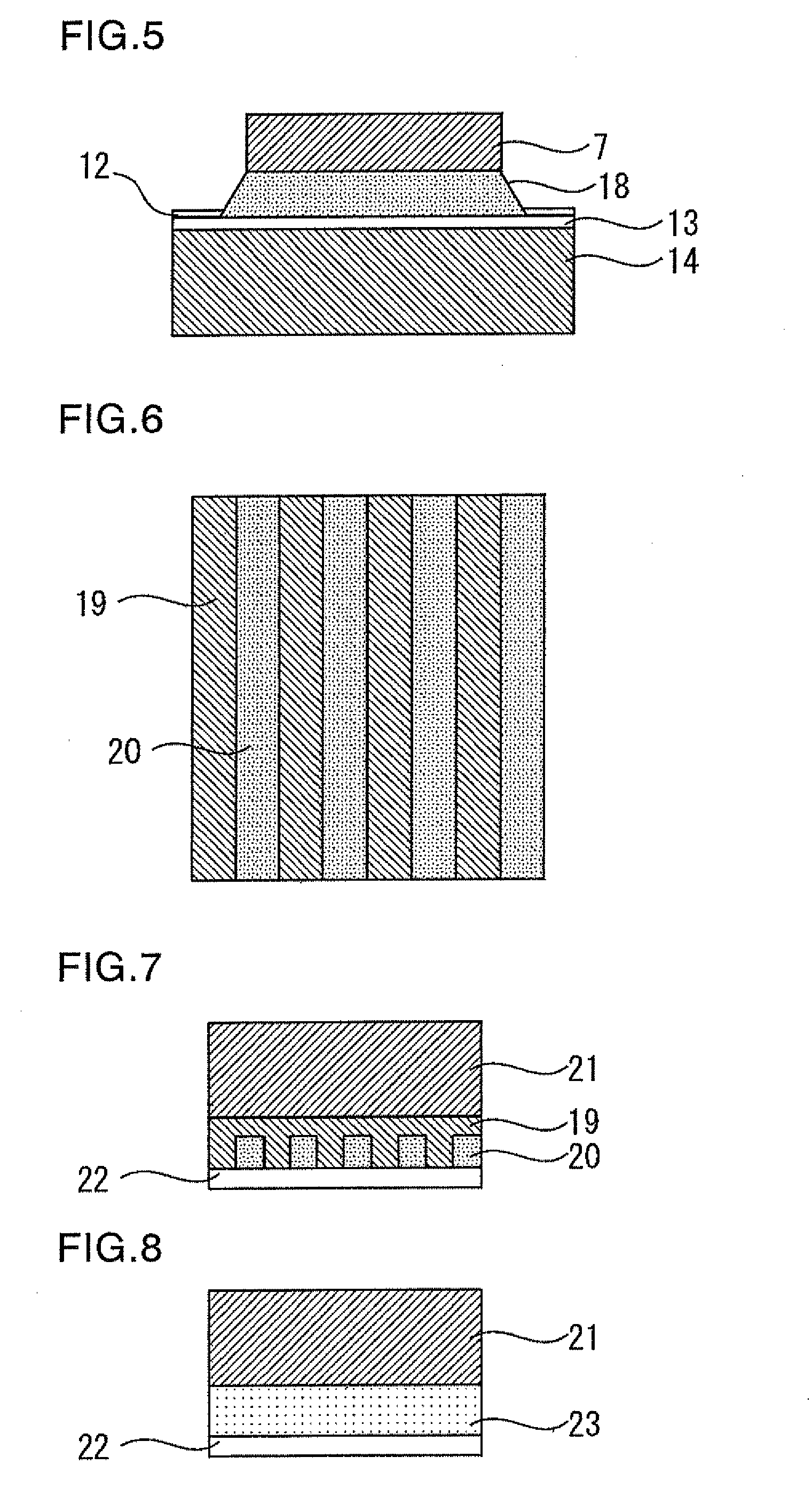Semiconductor device and die bonding method therefor
a technology of semiconductor devices and dies, which is applied in the direction of semiconductor devices, semiconductor/solid-state device details, electrical devices, etc., can solve the problems of reducing increasing thermal resistance, and voids formed in so as to prevent a reduction in the strength of the solder joint portions, and reduce the number of lead frames that can be obtained per unit volume of material
- Summary
- Abstract
- Description
- Claims
- Application Information
AI Technical Summary
Benefits of technology
Problems solved by technology
Method used
Image
Examples
first embodiment
[0025]FIGS. 1 to 5 show a semiconductor device and a die bonding method therefor according to a first embodiment of the present invention.
[0026]In a die bonding process for a semiconductor chip, the chip is usually subjected to an elevated temperature higher than the melting point of the solder, causing the solder layer to assume a liquid state. As a result, the diffusion rate of the solder becomes extremely high, leading to “abnormal diffusion” of the solder and formation of voids. To prevent this from occurring, the diffusion rate of the solder must be reduced to prevent formation of voids. This requires that, when the die bonding has been completed, the melting point of the solder be increased to higher than the die bonding temperature so that the solder returns to a solid state.
[0027]To achieve this, according to the present embodiment, a solder bonding layer metal is formed on the back surface of the semiconductor chip, and a special metal for elevating the melting point of the...
second embodiment
[0043]FIGS. 6 and 7 show a semiconductor device and a die bonding method therefor according to a second embodiment of the present invention. Although the first embodiment has been described with reference to the case where the melting point elevating metal 9 is Ti, the melting point elevating metal 9 may be Pt with the same effect.
[0044]According to the present embodiment, the melting point elevating metal 9 is deposited in stripes on the back surface of the semiconductor chip to allow the metal to uniformly diffuse into the solder.
[0045]FIG. 6 shows the back surface of the semiconductor chip with the oxidation inhibiting metal 22 removed, and FIG. 7 shows a cross-sectional view of the semiconductor chip.
[0046]Referring to FIGS. 6 and 7, the semiconductor chip comprises a melting point elevating metal 19, a solder bonding layer metal 20; a semiconductor substrate 21, and a metal 22 for improving solder wetting property or inhibiting oxidation. This arrangement allows the melting poi...
third embodiment
[0048]FIG. 8 shows a cross-sectional view of a semiconductor chip of a semiconductor device according to a third embodiment of the present invention. In this semiconductor device, powdered metal having a melting point elevating effect is uniformly mixed in the solder bonding layer.
[0049]Referring to FIG. 8, the semiconductor chip comprises a semiconductor substrate 21 and a solder bonding layer metal 23 uniformly containing the melting point elevating metal 19 of the second embodiment. Reference numeral 22 shows a metal for improving solder wetting property or inhibiting oxidation.
[0050]Thus, according to the present embodiment, in the solder bonding layer metal 23, the melting point elevating metal 19 is powdered and mixed in the solder bonding layer metal 20 to allow the melting point elevating metal 19 to uniformly diffuse into the solder.
[0051]Thus, the present embodiment has the same effect as the second embodiment. Furthermore, since the melting point elevating metal 19 is pow...
PUM
| Property | Measurement | Unit |
|---|---|---|
| temperature | aaaaa | aaaaa |
| wetting properties | aaaaa | aaaaa |
| semiconductor | aaaaa | aaaaa |
Abstract
Description
Claims
Application Information
 Login to View More
Login to View More - R&D
- Intellectual Property
- Life Sciences
- Materials
- Tech Scout
- Unparalleled Data Quality
- Higher Quality Content
- 60% Fewer Hallucinations
Browse by: Latest US Patents, China's latest patents, Technical Efficacy Thesaurus, Application Domain, Technology Topic, Popular Technical Reports.
© 2025 PatSnap. All rights reserved.Legal|Privacy policy|Modern Slavery Act Transparency Statement|Sitemap|About US| Contact US: help@patsnap.com



